Welcome, adventurers! Death Valley National Park, a land of scorching heat, desolate beauty, and captivating history, beckons you to explore its unique wonders. But before you embark on your desert odyssey, let’s delve into some fascinating facts about Death Valley National Park and discover why a guided tour can be your key to unlocking an unforgettable experience.
Fun Facts About Death Valley National Park
The Hottest Spot on Record: Believe it or not, Death Valley National Park holds the record for the hottest temperature ever recorded on Earth! In 1913, Furnace Creek notched a scorching 134°F (56.7°C).
- A Sea Below Sea Level: Badwater Basin, Death Valley’s crown jewel, sits at a staggering 282 feet (86 meters) below sea level, making it the lowest point in North America.
- A Land of Extremes: Death Valley is a land of dramatic contrasts. While the valley floor endures scorching heat and aridity, towering mountain ranges like the Telescope Peak reach over 11,000 feet (3,353 meters), creating a diverse and fascinating ecosystem.
- Unexpected Blooms: Though seemingly barren, Death Valley can transform into a wildflower wonderland. Spring rains trigger a vibrant explosion of color, painting the desert landscape with a dazzling display of wildflowers.
- Starry Skies Galore: Due to minimal light pollution, Death Valley boasts some of the darkest night skies in the lower 48 states. Stargazing enthusiasts flock here to witness breathtaking celestial wonders.
As you can see, Death Valley National Park is a place unlike any other on Earth. But with its vast expanse, extreme temperatures, and hidden gems, navigating this unique landscape can be challenging.
Also, you may like to read: Dharamkot, Himachal Pradesh: Everything You Need to Know
Importance of guided tours for maximizing experience
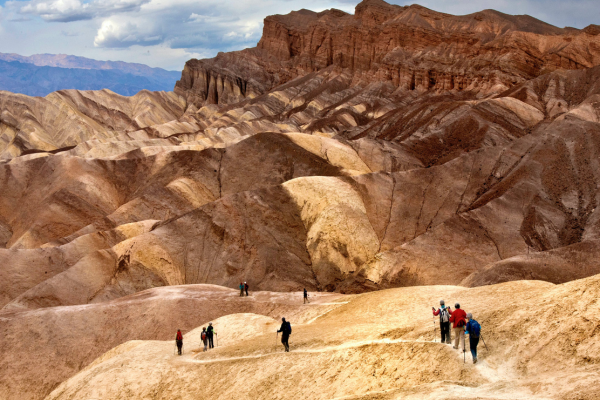
This is where a guided Death Valley National Park tour comes in. Here’s why a guided tour can elevate your desert adventure:
- Expert Knowledge: Experienced guides possess a wealth of knowledge about Death Valley’s geology, history, flora, and fauna. They’ll share captivating stories and insights that bring the park to life.
- Safe Exploration: Death Valley’s vastness and extreme temperatures can pose challenges for unprepared visitors. Guides ensure you explore safely and avoid potential dangers.
- Hidden Gems Revealed: Guides know the secret spots, hidden viewpoints, and lesser-known trails, allowing you to experience Death Valley beyond the typical tourist path.
- Hassle-Free Navigation: Forget about deciphering maps or worrying about logistics. Let your guide handle the navigation, allowing you to relax and soak in the scenery.
- Tailored Experiences: From adventurous hikes to leisurely sightseeing tours, there’s a Death Valley tour suited to every interest and fitness level.
Purpose of the guide
This comprehensive guide will equip you with all the information you need to choose the perfect Death Valley National Park tour. We’ll explore various tour options, highlight what to consider when making your selection, and provide valuable tips to ensure you have a safe, enjoyable, and unforgettable desert adventure.
So, get ready to embark on a journey through Death Valley National Park, where the extraordinary awaits!
Understanding Death Valley National Park
Death Valley National Park, a captivating expanse of sculpted canyons, towering mountains, and stark beauty, beckons explorers with its unique geography, weather patterns, and diverse wildlife. Let’s delve deeper into the park’s fascinating characteristics:
Geographical features and landscape
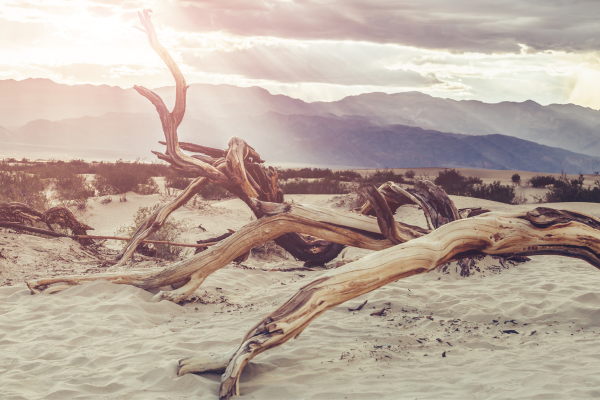
Death Valley National Park boasts a dramatic and diverse landscape unlike any other. Here are some key geographical features:
- The Lowest Point in North America: Badwater Basin, with its mesmerizing salt flats, sits at a staggering 282 feet (86 meters) below sea level.
- Towering Mountain Ranges: Death Valley isn’t just about scorching basins. Majestic mountain ranges like the Black Mountains and the Telescope Peak reach over 11,000 feet (3,353 meters), creating a habitat for various plant and animal life.
- Eroded Canyons: Millions of years of erosion have carved spectacular canyons into the park’s landscape. Explore Zabriskie Point for panoramic views of eroded hills or hike through Golden Canyon, a photographer’s paradise.
- Mysterious Sand Dunes: Death Valley boasts the largest dune system in North America, Mesquite Flat Sand Dunes. These towering dunes, reaching up to 300 feet (91 meters) in height, shift and change with the desert winds.
- Ancient Lakebeds: Death Valley was once a vast lake. Evidence of this prehistoric body of water can be seen in the Badwater Basin’s salt flats and surrounding rock formations.
Death Valley National Park truly is a land of dramatic contrasts, where scorching desert valleys meet towering mountains, and ancient lakebeds tell stories of a bygone era.
You may also like to read: Mayurbhanj Tourist Place | History, Places, Mayurbhanj in India Map
Death Valley National Park Topographic Map
Death Valley National Park is known for its extreme temperatures and harsh desert landscapes, but one of the most fascinating aspects of the park is its topography. A detailed topographic map of Death Valley National Park reveals a diverse and complex landscape that is both beautiful and challenging.
The topographic map of Death Valley National Park shows a range of elevation from below sea level at Badwater Basin, the lowest point in North America, to over 11,000 feet at Telescope Peak.
The map is covered with contour lines that indicate changes in elevation, allowing visitors to see the steep cliffs, rugged canyons, and vast salt flats that make up the park.
One of the most prominent features on the topographic map is the Amargosa Range, a series of rocky peaks that rise sharply from the desert floor. This range creates a dramatic backdrop to the park, with peaks reaching heights of over 5,000 feet.
The map also shows the Panamint Range to the west, with its jagged peaks and deep canyons that create a rugged and awe-inspiring landscape.
The topographic map of Death Valley National Park also highlights the many alluvial fans that spread out from the surrounding mountain ranges.
These fans are formed by the erosion of rock and sediment from the mountains, creating a network of dry washes and canyons that crisscross the desert floor. The map shows the intricate pattern of these fans, which provide important habitats for wildlife and vegetation in the park.
Perhaps the most striking feature on the topographic map of Death Valley National Park is the vast salt flats that cover much of the park. The map shows the intricate patterns of the salt formations, created by the evaporation of water in the extreme desert heat.
These salt flats are not only beautiful to look at, but they also play an important role in the ecology of the park, providing unique habitats for specialized plant and animal species.
The topographic map of Death Valley National Park reveals a diverse and dynamic landscape that is both challenging and beautiful.
From the rugged peaks of the Amargosa and Panamint Ranges to the vast salt flats and alluvial fans that cover the desert floor, the map provides a detailed look at the unique geology and topography of this remarkable park.
Visitors to Death Valley National Park can use this map to explore the many different landscapes and ecosystems that make up this iconic desert wilderness.
Tip: Familiarize yourself with the park’s topography before your visit. This will enhance your understanding of the landscape and allow you to plan your exploration effectively.
You may also like to read: Angkor Wat Temple – 8th Wonder of the World – Preserving Heritage
Death Valley National Park Weather
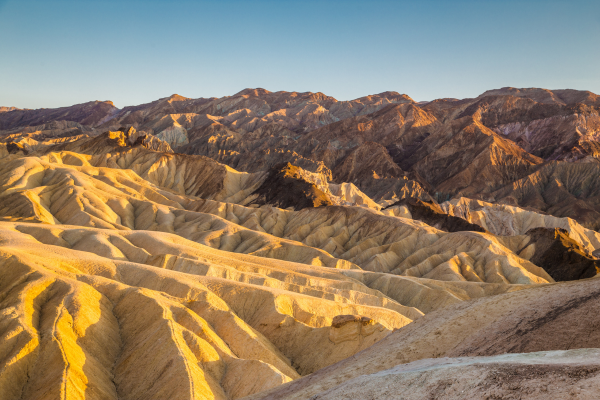
Death Valley National Park is known for its extreme weather conditions, with temperatures soaring to some of the hottest in the world and very little rainfall. Situated in California and Nevada, this unique park showcases a landscape of vast sand dunes, rugged mountains, and salt flats that seem to stretch on endlessly.
During the summer months, Death Valley experiences scorching temperatures that can reach up to 130 degrees Fahrenheit.
The heat is so intense that it can be life-threatening for those unprepared. Visitors are advised to drink plenty of water, wear protective clothing, and avoid staying outdoors for long periods of time during the peak of the day.
The sun beats down mercilessly, creating a shimmering heat haze that distorts the horizon and makes everything seem surreal.
In contrast, winters in Death Valley can be quite mild, with daytime temperatures averaging around 60 degrees Fahrenheit. The cool winter air brings relief from the oppressive summer heat, making it a more comfortable time to explore the park’s diverse landscapes.
However, visitors should still take precautions against the cold nighttime temperatures, which can drop below freezing.
While Death Valley is known for its extreme temperatures, it also has a reputation for being one of the driest places on Earth. The park receives an average of less than 2 inches of rain per year, with some years recording no rainfall at all.
The arid climate creates a stark and barren landscape, where plants and animals have adapted to survive with very little water.
Despite the harsh conditions, Death Valley National Park is home to a surprising diversity of plant and animal species. Cacti, creosote bushes, and desert wildflowers can be found scattered across the desert floor, while bighorn sheep, coyotes, and jackrabbits roam the rugged mountains and sand dunes.
Death Valley National Park’s weather is as extreme and awe-inspiring as its landscape. From the searing heat of summer to the cold nights of winter, visitors to this unique park can experience nature at its most raw and unforgiving.
The park’s harsh climate may not be for the faint of heart, but for those who are willing to brave the elements, it offers an unforgettable adventure in one of the world’s most extreme environments.
Important: Always check the weather forecast before venturing into Death Valley National Park. Hydrate adequately during hot weather and plan your hikes for cooler mornings or evenings when temperatures are more manageable.
you may also like to read: Rattlesnake Island Florida: Everything You Need To Know
Death Valley National Park Animals
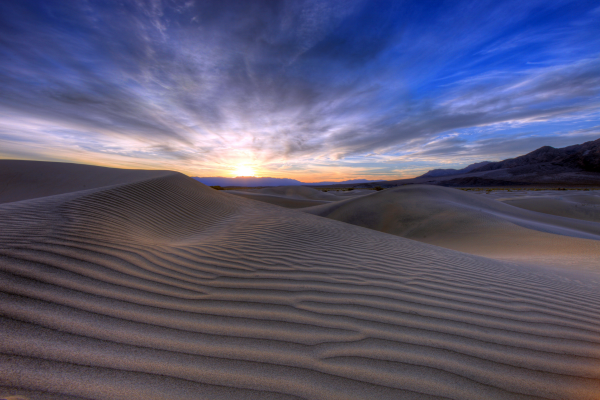
Despite its harsh environment, Death Valley National Park is surprisingly home to a variety of resilient animals. Here are some creatures you might encounter:
Death Valley National Park is home to a diverse array of animals that have adapted to survive in this harsh desert environment. From reptiles and insects to birds and mammals, the park is teeming with life despite its extreme conditions.
One of the most iconic animals of Death Valley is the desert bighorn sheep. These majestic creatures can often be seen scaling the steep cliffs and rugged terrain of the park, using their impressive agility to navigate the rocky landscape. With their distinctive curved horns and sandy-colored fur, they are a striking sight against the barren backdrop of the desert.
Another notable resident of Death Valley is the sidewinder rattlesnake. With its unique method of locomotion, this venomous snake is able to move quickly across the hot sand by looping its body sideways in a distinctive corkscrew pattern.
While encountering a sidewinder in the wild can be a bit unnerving, they play a crucial role in keeping the rodent population in check.
In addition to these larger animals, Death Valley is also home to a variety of smaller creatures such as kangaroo rats, kit foxes, and jackrabbits. These animals have all developed special adaptations to cope with the lack of water and extreme temperatures that characterize the desert environment.
Kangaroo rats, for example, have specialized kidneys that allow them to extract as much moisture as possible from their food, while kit foxes are able to survive on a diet consisting mainly of insects and small mammals.
Birdwatchers will also find plenty to enjoy in Death Valley, with over 300 species of birds either residing in or passing through the park throughout the year.
From majestic birds of prey like the golden eagle to tiny hummingbirds flitting among the desert wildflowers, there is no shortage of avian diversity to be found in this unique landscape.
Overall, the animals of Death Valley National Park are a testament to the resilience and adaptability of nature.
Despite the harsh conditions that characterize this desert environment, these creatures have found ways to thrive and survive, carving out their own niche in this unforgiving landscape.
Whether you’re exploring the park by foot, car, or bike, keep an eye out for the diverse array of animals that call Death Valley home – you never know what You may come across interesting creatures along the way.
Remember: Observe all wildlife from a safe distance and never attempt to feed them.
You may also like to read: Exploring the Wonders of Haleakala National Park Wildlife: A Comprehensive Guide
Death Valley National Park Wildflowers
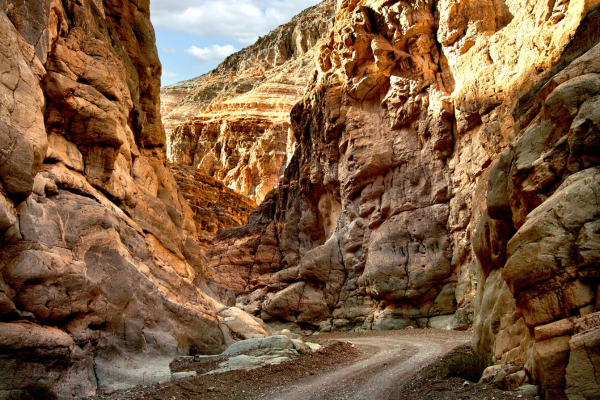
As spring arrives in Death Valley National Park, a beautiful display of wildflowers bursts forth across the desert landscape. These vibrant blooms bring life to the seemingly desolate environment, turning the arid terrain into a colorful tapestry of beauty.
Visitors from all over the world come to witness this spectacle, as Death Valley National Park becomes a haven for wildflower enthusiasts and nature lovers alike.
The wildflowers of Death Valley are a true testament to the resilience of nature. Despite the harsh conditions of extreme heat and minimal rainfall, these plants have adapted to bloom in this unforgiving environment.
The vast array of colors and shapes that dot the desert floor are a stunning sight to behold, creating a stark contrast against the barren backdrop of dry, cracked earth.
One of the most iconic wildflowers of Death Valley is the Desert Gold. This bright yellow bloom carpets the desert floor in a blanket of golden hues, creating a mesmerizing sight for those lucky enough to witness it.
The Desert Gold is just one of the many wildflower species that call Death Valley home, each with its own unique beauty and characteristics.
The wildflowers of Death Valley are not only a sight to behold, but also play a crucial role in the ecosystem of the park. These plants provide food and shelter for a variety of wildlife, including insects, birds, and small mammals.
They also help to prevent erosion and maintain the delicate balance of the desert ecosystem. Without the wildflowers, Death Valley would be a vastly different and less vibrant place.
Visitors to Death Valley National Park during the wildflower season are treated to a sensory feast of sight, smell, and sound. The sweet fragrance of blooming flowers fills the air, while the gentle buzzing of bees and the chirping of birds add to the symphony of nature.
The vibrant colors and delicate petals of the wildflowers create a sense of wonder and awe, drawing visitors in and leaving them with lasting memories of this natural wonder.
The wildflowers of Death Valley National Park are a true marvel of nature. Against all odds, these plants thrive in a harsh and challenging environment, creating a stunning display of beauty that captivates all who are fortunate enough to witness it.
The wildflower season in Death Valley is a time of renewal and rebirth, as the desert comes alive with color and life. It is a reminder of the resilience and beauty of nature and a testament to the wonder and awe that can be found in even the most unexpected of places.
Keep in mind: Wildflower blooms are unpredictable and vary from year to year. Check park advisories for current wildflower conditions before your visit.
You may also like to read: Fiji Island Travel Guide: 32 Things to Do and See
Death Valley National Park Lake
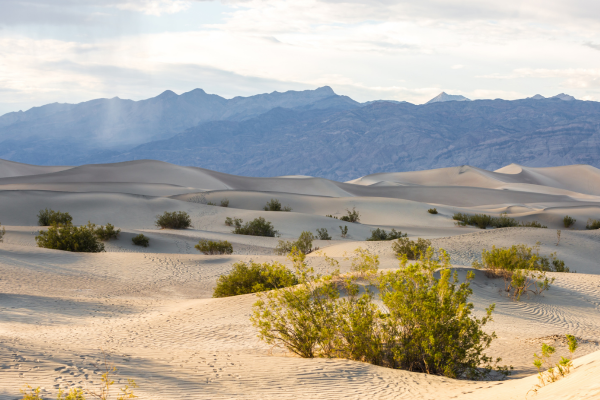
Death Valley National Park is home to many unique and stunning natural wonders, but one of the most intriguing features of this desert landscape is the Death Valley National Park Lake. This seemingly out-of-place body of water is a sight to behold, offering a stark contrast to the surrounding arid desert.
The Death Valley National Park Lake is a saltwater lake, created by an ancient inland sea that dried up many thousands of years ago. The lake sits within the confines of the park, nestled among the rugged mountains and vast stretches of sand dunes.
Its surface is calm and still, reflecting the bright blue sky above like a mirror.
The lake is not only beautiful to look at, but it also plays a vital role in the ecosystem of Death Valley National Park. Despite its high salt content, the lake supports a variety of plant and animal life, including waterfowl, fish, and insects.
The presence of the lake provides a much-needed source of water in an otherwise harsh and unforgiving environment.
Visitors to Death Valley National Park can experience the splendor of the lake firsthand by taking a hike along its shores or simply sitting and taking in the breathtaking views.
The tranquility of the lake is a welcome respite from the harsh desert climate, providing a sense of peace and serenity to all who visit.
The Death Valley National Park Lake is a reminder of the incredible diversity and resilience of the natural world. Despite the challenges posed by its harsh environment, the lake continues to thrive and provide a home for a wide array of plant and animal species.
Its beauty and significance make it a must-see destination for anyone visiting Death Valley National Park.
Interesting Fact: Death Valley’s name reflects the harsh environment. Early explorers struggled to find water in the park, leading to its infamous moniker.
Benefits of Guided Tours
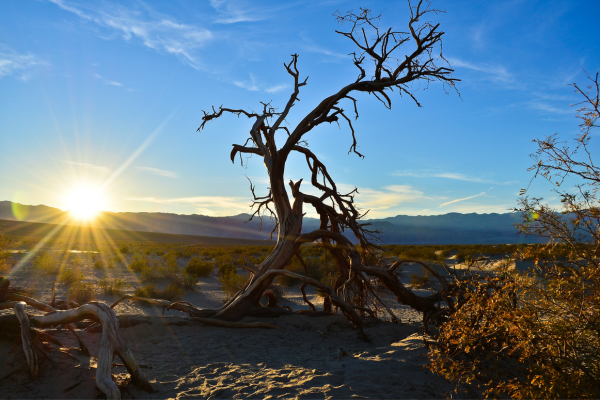
Now that you’re intrigued by the captivating wonders of Death Valley National Park, let’s explore the undeniable benefits of embarking on your adventure with a guided tour:
1. Expertise in local guides
Death Valley National Park is a vast and complex ecosystem. While guidebooks offer a glimpse into its wonders, nothing compares to the insights of a seasoned local guide. What these specialists contribute is as follows:
- In-depth Knowledge: Years of experience exploring Death Valley National Park have equipped your guide with a wealth of knowledge about the park’s geology, history, plant and animal life, and cultural significance. They’ll share fascinating stories about Death Valley’s unique past, from ancient sea beds to Native American history.
- Untold Tales: Go beyond the usual tourist sites and delve into the lesser-known stories and hidden gems of Death Valley National Park. Local guides often have a personal connection to the park and can share captivating anecdotes that bring Death Valley to life.
- Expert Interpretation: The desert landscape can be visually stunning yet challenging to decipher. Your guide will act as your interpreter, pointing out geological formations, explaining natural processes, and helping you appreciate the park’s intricate details.
With a knowledgeable guide by your side, Death Valley National Park transforms from a breathtaking vista into a captivating story waiting to be unraveled.
2. Safety considerations in a harsh environment
Death Valley National Park’s beauty comes hand-in-hand with a harsh environment. Soaring temperatures, scorching sun, and unpredictable terrain can pose challenges for even seasoned explorers. Here’s how a guided tour ensures your safety:
- Knowledgeable Navigation: Death Valley National Park’s vastness can be deceiving. Experienced guides know the best trails, hidden dangers to avoid, and alternative routes in case of inclement weather.
- Safety First: From proper hydration to sun protection, your guide will provide essential safety tips and ensure you’re prepared for the desert environment.
- Emergency Preparedness: In the unlikely event of an emergency, your guide will be trained to handle the situation and provide assistance.
Let your guide handle the logistics and safety concerns, allowing you to relax and fully enjoy the breathtaking scenery of Death Valley National Park.
3. Access to restricted areas and hidden gems
Death Valley National Park holds a treasure trove of hidden wonders beyond the usual tourist spots. With a guided tour, you can unlock these secrets and explore areas that may be restricted or challenging to access on your own:
- Exclusive Access: Certain areas of Death Valley National Park require permits or special access. Many guided tours have established partnerships that allow you to explore these restricted areas and witness sights inaccessible to most visitors.
- Hidden Trails and Viewpoints: Experienced guides know the hidden trails, breathtaking viewpoints, and off-the-beaten-path locations that offer a unique perspective of Death Valley National Park.
- Unearthing History: Death Valley National Park is dotted with historical sites and abandoned settlements. Your guide will lead you to these fascinating locations and share their stories, enriching your understanding of the park’s past.
By joining a guided tour, you gain access to a whole new dimension of Death Valley National Park, unlocking hidden wonders and creating memories that will last a lifetime.
Fun Things to Do at Death Valley National Park
Death Valley National Park isn’t just about scorching temperatures and desolate landscapes. It’s a treasure trove of adventure, offering a variety of activities for every kind of explorer. Here’s a glimpse into the exciting experiences that await you:
1. Jeep tours
Embark on an unforgettable journey with a Death Valley National Park jeep tour. These exhilarating adventures allow you to traverse rugged terrain in comfort and style. Explore hidden canyons, conquer challenging sand dunes, and reach breathtaking viewpoints that would be inaccessible by car.
Your experienced guide will navigate the desert landscape while sharing fascinating insights about the park’s geology, history, and hidden wonders.
2. Best Hikes in Death Valley National Park
Lace-up your boots and prepare to be awestruck by Death Valley National Park’s diverse hiking trails. From short, family-friendly paths to challenging treks with breathtaking vistas, there’s a trail waiting to be explored by every adventurer.
The vast and rugged landscape of Death Valley National Park offers some of the most breathtaking hiking opportunities in the United States. From towering sand dunes to colorful canyons, this park has something to offer hikers of all skill levels.
Here are some of the best hikes in Death Valley National Park:
1. Mesquite Flat Sand Dunes: Located near Stovepipe Wells, the Mesquite Flat Sand Dunes are one of the most iconic landscapes in Death Valley National Park. These towering dunes shift and change with the wind, creating a mesmerizing landscape that is perfect for both sunrise and sunset hikes.
The hike to the tallest dune offers stunning views of the surrounding mountains and valleys, making it a must-do hike for visitors to the park.
2. Golden Canyon: One of the most popular hikes in Death Valley National Park, Golden Canyon offers hikers the chance to explore a colorful and dramatic canyon landscape. The trail is well-marked and relatively easy, making it a great option for families and novice hikers.
Highlights of the hike include the Red Cathedral, a stunning red rock formation that towers over the canyon, and the Golden Canyon Interpretive Trail, which features signs explaining the geology and history of the area.
3. Telescope Peak: For a more challenging hike, consider tackling Telescope Peak, the highest point in Death Valley National Park. This strenuous hike climbs over 11,000 feet in elevation, offering stunning views of the surrounding desert landscape and the Sierra Nevada mountains in the distance.
The trail is steep and rocky, but the reward at the summit is well worth the effort.
4. Badwater Basin: For a unique hiking experience, consider exploring the salt flats of Badwater Basin, the lowest point in North America. The hiking is relatively flat and easy, but the landscape is otherworldly, with vast expanses of salt crust stretching out as far as the eye can see. The heat can be intense, so be sure to bring plenty of water and sunscreen.
5. Mosaic Canyon: Mosaic Canyon is a hidden gem in Death Valley National Park, with stunning marble walls that have been sculpted by water over millions of years. The hike through the narrow canyon is relatively easy, with some scrambling required in certain sections.
Highlights of the hike include the Mosaic Canyon Trail, which features a diverse array of rock formations and colorful mineral deposits.
Death Valley National Park offers some of the best hiking opportunities in the country, with trails that range from easy and family-friendly to challenging and rugged.
Whether you’re looking for stunning views, unique geological features, or a physical challenge, there is a hike in Death Valley National Park for you. So lace up your boots, pack plenty of water, and hit the trails to explore this amazing desert landscape.
3. Death Valley National Park Pics
The sheer beauty and dramatic landscapes of Death Valley National Park will leave you speechless. But don’t just let the memories fade! Capture the essence of your adventure with stunning Death Valley National Park pics.
From the otherworldly salt flats of Badwater Basin to the vibrant palette of Zabriskie Point at sunrise, Death Valley offers endless opportunities to take breathtaking photographs. Whether you’re a seasoned photographer or a casual smartphone user, the park’s unique landscapes will provide a photographer’ paradise.
4. Night sky viewing tours
Death Valley National Park boasts some of the darkest night skies in the lower 48 states, making it a haven for stargazers. Join a Death Valley National Park night sky viewing tour and be mesmerized by the dazzling display of stars, planets, and celestial wonders.
Guides will help you navigate the constellations, identify celestial objects, and share their knowledge about the universe. Witness the Milky Way in all its glory, spot shooting stars streaking across the sky, and gain a newfound appreciation for the vastness of space.
5. Specialty tours (geological, historical, cultural)
For those seeking an in-depth exploration of Death Valley National Park, a variety of specialty tours cater to specific interests. Embark on a geological tour to uncover the park’s fascinating rock formations and learn about its volcanic history.
Take a historical tour to explore the remnants of ghost towns and discover the stories of Death Valley’s intriguing past. Immerse yourself in the park’s unique culture with a cultural tour, learning about the indigenous people who have inhabited this land for centuries.
Best Places to Stay in Death Valley National Park
Choosing your accommodation adds another layer of adventure to your Death Valley National Park experience. Here’s a breakdown of the options within the park to help you find the perfect home base for exploring:
1. Immerse Yourself in History: The Oasis at Death Valley
Steeped in history, The Oasis at Death Valley offers a luxurious stay amidst the desert landscape.
Choose from the historic Inn at Death Valley, renowned for its Spanish Colonial Revival architecture and celebrity clientele, or the more contemporary Furnace Creek Inn & Ranch.
This resort village provides all the amenities you could desire, including swimming pools, tennis courts, golf courses, and a variety of dining options.
2. A Budget-Friendly Adventure: Stovepipe Wells Village Hotel
For a more rustic and affordable option, Stovepipe Wells Village Hotel is a great choice.
Located near the geographic center of Death Valley National Park, this hotel offers basic amenities and comfortable accommodations.
An on-site restaurant, general store, and gas station provide essentials for your desert adventure.
3. Camping Under the Stars: Death Valley National Park Campgrounds
For the adventurous souls who crave a true connection with the desert, Death Valley National Park offers several campgrounds.
Furnished Campgrounds provide basic amenities like restrooms, showers, and picnic tables.
For a more rustic experience, Primitive Campgrounds offer stunning locations with minimal facilities.
Be sure to reserve your campsite well in advance, especially during peak season, as Death Valley National Park campgrounds tend to fill up quickly.
Important Note: Death Valley experiences scorching temperatures, especially during the summer months. If you visit during this time, consider accommodations with air conditioning for a comfortable stay.
4. Beyond the Park Borders:
While staying within Death Valley National Park offers convenience, there are hotels and resorts located in nearby areas like Furnace Creek and Death Valley Junction. These locations may offer more affordable options, but be prepared for a slightly longer commute to the park itself.
Remember: No matter where you choose to stay, Death Valley National Park awaits with its awe-inspiring beauty and unforgettable experiences.
Planning and Preparation
Now that you’re excited about exploring Death Valley National Park with a guided tour, let’s delve into the planning and preparation stage to ensure a smooth and enjoyable desert adventure.
1. Best Time to Visit Death Valley National Park
Death Valley’s extreme temperatures are no secret. While the park is accessible year-round, the most comfortable times to visit are during spring (March-May) and fall (October-November). During these shoulder seasons, temperatures are pleasant, ranging from the low 70s°F (mid-20s°C) to the high 80s°F (low 30s°C).
Nestled within the Mojave Desert of eastern California, Death Valley National Park is a stunning landscape of dramatic contrasts. From towering sand dunes to rugged mountains, salt flats, and vast expanses of arid desert, this park is a truly unique destination that attracts visitors from around the world.
However, with extreme temperatures that can soar well over 100 degrees Fahrenheit in the summer months, choosing the best time to visit Death Valley is crucial to ensuring a safe and enjoyable experience.
For those looking to avoid the sweltering heat and crowds, the best time to visit Death Valley National Park is during the cooler months of late fall, winter, and early spring. From November to March, temperatures are more moderate, with daytime highs typically ranging from the 60s to 80s Fahrenheit.
This makes it an ideal time for exploring the park’s diverse landscapes, hiking its scenic trails, and marveling at its breathtaking vistas without the risk of heat-related illnesses.
During the winter months, Death Valley National Park experiences mild weather, making it a popular destination for outdoor enthusiasts seeking escape from the cold and snowy conditions elsewhere.
With clear skies and crisp air, this time of year offers excellent visibility for taking in the park’s natural beauty and photographing its iconic landmarks, such as the colorful Artist’s Palette, the mesquite sand dunes, and the rugged peaks of the Panamint Range.
In addition to the pleasant temperatures, visiting Death Valley during the winter months also means avoiding the crowds that flock to the park during the peak tourist season of late spring and summer.
By visiting in the off-season, visitors can enjoy a more peaceful and tranquil experience, with fewer cars on the road, less congestion at popular viewpoints, and shorter wait times at the park’s visitor centers and facilities.
While winter and early spring are generally considered the best times to visit Death Valley National Park, each season offers its own unique charm and opportunities for exploration.
In the spring, the park comes alive with vibrant wildflowers that carpet the desert floor in a riot of color, creating a stunning contrast to the stark beauty of the surrounding landscape.
The cool nights of spring also make it an ideal time for stargazing, with the park’s dark skies offering unparalleled views of the Milky Way and other celestial wonders.
In contrast, the summer months in Death Valley National Park are brutally hot, with temperatures often exceeding 120 degrees Fahrenheit. While this time of year may not be ideal for most visitors, it does offer the unique opportunity to experience the park’s extreme conditions and witness the resilience of the flora and fauna that inhabit this hostile habitat.
For those willing to brave the heat, summer can be a time of solitude and introspection, with the vast expanse of the desert stretching out before them like a blank canvas waiting to be explored.
When temperatures are more moderate and wildflowers are in bloom, the cooler months of late fall, winter and early spring are the ideal times to visit Death Valley National Park, and the park is less crowded.
By choosing to visit during these times, visitors can enjoy a more comfortable and enjoyable experience, with plenty of opportunities for hiking, photography, stargazing, and wildlife watching.
Whether you’re a first-time visitor or a seasoned adventurer, Death Valley’s diverse and awe-inspiring landscapes are sure to leave you with memories that will last a lifetime.
Remember: No matter the season, Death Valley is a desert environment. Always be ready for unexpected weather shifts and make appropriate travel plans.
2. Packing essentials for desert exploration
- Hydration is Key: Pack plenty of reusable water bottles and stay hydrated throughout your tour. Aim to drink even before feeling thirsty.
- Sun Protection: The desert sun is unforgiving. Pack a wide-brimmed hat, and sunglasses with UV protection, and wear sunscreen with SPF 30 or higher, reapplying frequently.
- Layered Clothing: Temperatures can fluctuate throughout the day, so pack breathable layers that you can easily adjust.
- Comfortable Footwear: Opt for sturdy hiking boots or shoes with good ankle support for navigating uneven terrain.
- Headlamp or Flashlight: If your tour includes nighttime activities, bring a headlamp or flashlight for better visibility.
- Camera: Capture the awe-inspiring beauty of Death Valley National Park. Consider a camera with a zoom lens to capture those distant desert vistas.
- Snacks: If your tour includes physical activity, bring along some high-energy snacks to keep you fueled throughout the day.
Optional but Useful:
- Bandana or Buff: Protects your neck from the sun and can be used to wipe away sweat.
- Small First-Aid Kit: Be prepared for minor scrapes or blisters.
- Insect repellent (especially during spring and summer)
- Binoculars: For getting a closer look at the park’s wildlife and geological wonders.
3. Understanding tour itineraries and durations
Death Valley National Park tours come in various flavors, catering to different interests and fitness levels. Here’s a breakdown to assist you in selecting the ideal one:
- Day Tours from Las Vegas: These convenient tours offer a taste of Death Valley’s highlights in a single day. Explore iconic landmarks like Badwater Basin, Zabriskie Point, and Dante’s View.
- Multi-Day Adventures: For a more immersive experience, consider multi-day tours that venture beyond Death Valley National Park itself. Explore ghost towns, surrounding mountain ranges, and delve deeper into the park’s hidden gems.
- Specialized Itineraries: Photography tours, geology tours, and stargazing tours cater to specific interests. These tours offer in-depth exploration led by experts who share their passion for a particular aspect of Death Valley.
Tour durations can range from a few hours to several days. Choose a tour that aligns with your available time and interests.
4. Making reservations in advance
Popular Death Valley National Park tours tend to book up quickly, especially during peak seasons. Book your tour well in advance to secure your spot and avoid disappointment.
Most tour operators allow online reservations, making the process convenient and efficient. Carefully review tour inclusions, exclusions, and cancellation policies before booking.
By planning and preparing effectively, you can ensure your Death Valley National Park tour is a success. Now, get ready to embark on an unforgettable desert adventure!
Safety Tips for Touring Death Valley
Even with the excitement of exploring Death Valley National Park, safety should always be a top priority. Here are some crucial tips to ensure a smooth and enjoyable adventure:
1. Staying hydrated and protected from the sun
- Hydration is Key: Death Valley is notorious for its extreme heat and aridity. Dehydration can set in quickly, so staying hydrated is vital. Aim to drink at least one gallon (4 liters) of water per day, even if you don’t feel thirsty. Carry a refillable water bottle and sip frequently throughout the day.
- Sun Protection Essentials: Don’t underestimate the power of the desert sun! Pack a wide-brimmed hat, and sunglasses with UV protection, and wear loose-fitting, long-sleeved clothing made from breathable fabrics. Apply sunscreen liberally (SPF 30 or higher) and reapply every two hours, especially after swimming or sweating.
- Seek Shade Whenever Possible: Plan your activities during cooler morning or evening hours whenever possible. Utilize shaded areas like visitor centers or designated rest areas to take breaks and avoid prolonged sun exposure during the hottest part of the day (typically between 10 am and 4 pm).
2. Following park regulations and guidelines
- Respect the Landscape: Death Valley National Park is a fragile ecosystem. To prevent harming wildlife habitats and vegetation, stick to designated trails.
- Leave no trace by packing out all trash and respecting wildlife by maintaining a safe distance.
- Heed Park Advisories: Always check park advisories before your visit. Be aware of any road closures, flash flood warnings, or extreme weather conditions that could impact your trip.
- Permits and Fees: Certain areas within Death Valley National Park may require permits for camping, backcountry hiking, or specific activities. Familiarize yourself with park regulations and obtain any necessary permits beforehand.
3. Being mindful of wildlife encounters
- Respectful Wildlife Viewing: Death Valley is home to a variety of unique desert creatures, such as coyotes, bighorn sheep, and desert tortoises. Maintain a safe distance from all wildlife and avoid disturbing their natural behavior. Never attempt to feed or handle wild animals.
- Beware of Flash Floods: Flash floods can occur even in dry areas after heavy rain. Be alert to weather conditions and avoid hiking in canyons or washes during potential flash flood threats.
- Snake Safety: While rattlesnakes are present in Death Valley, encountering one is rare if you stay on designated trails. However, be aware of your surroundings and avoid placing your hands or feet anywhere you can’t see. If you encounter a snake, calmly move away and give it a wide berth.
4. Emergency preparedness
- Inform Someone of Your Plans: Let someone know your itinerary before heading out on your Death Valley adventure. This allows them to raise the alarm if you don’t return as expected.
- Cell Service may be Limited: Cell phone service can be unreliable in remote areas of Death Valley National Park. Consider carrying a handheld radio or satellite communicator for emergencies.
- Be Prepared for Car Trouble: Pack a basic emergency kit in your car, including water, non-perishable snacks, a first-aid kit, a flashlight, and a car charger for your phone. Let someone know if you plan on venturing off on remote roads.
By following these safety tips and being prepared, you can ensure a safe and enjoyable exploration of Death Valley National Park. Remember, respecting the environment and being mindful of your surroundings are key to a successful desert adventure.
Making the Most of Your Tour Experience
Having a Death Valley National Park tour guide by your side unlocks a world of possibilities, but your active participation is key to an unforgettable adventure. Here are some ways to maximize your tour experience:
1. Engaging with the environment and guides
- Curiosity is Key: Death Valley is a treasure trove of natural wonders and historical intrigue. Come prepared with questions for your guide! Their expertise can transform fleeting observations into fascinating discoveries about Death Valley’s geology, plant life, animal adaptations, and human history.
- Embrace the Landscape: Feel the textures of the unique rock formations, breathe in the fresh desert air (during cooler hours!), and appreciate the stark beauty of the surroundings. Listen to the whispers of the wind and keep an eye out for desert wildlife, with your guide’s help, of course.
2. Capturing memorable moments responsibly
- Sustainable Selfies: Snap away and capture those breathtaking Death Valley vistas! But remember, be a responsible visitor. Stay on designated trails, avoid disturbing wildlife habitats, and minimize your impact on the environment.
- Respectful Photography: Ask permission before photographing any cultural or historical sites, and be mindful of wildlife. To prevent approaching animals too closely, use a telephoto lens.
3. Learning about the park’s history and significance
- Death Valley’s Rich Tapestry: Death Valley National Park boasts a fascinating human story. Your guide will share insights into the lives of Native American tribes, early explorers, miners, and entrepreneurs who have all left their mark on this unforgiving landscape. Learn about the park’s designation and its ongoing conservation efforts.
- Understanding the Bigger Picture: Death Valley National Park is a crucial part of the Mojave Desert ecosystem. Understanding its delicate balance and the ongoing environmental challenges it faces will leave you with a deeper appreciation for its preservation.
4. Leaving no trace principles
Tread Lightly: Death Valley’s beauty is fragile. Respect the park’s delicate ecosystem by following “Leave No Trace” principles. Pack out all trash, leave rocks and plants undisturbed, and avoid creating new trails.
By minimizing your impact, you ensure future generations can enjoy this unique environment.
By actively engaging with your surroundings, your guide, and the park’s rich history, your Death Valley National Park tour will transform from a simple sightseeing trip into a profound and enriching experience. So, embrace the adventure, ask questions, and let the magic of Death Valley unfold!
Conclusion
Death Valley National Park, a land of extremes, beckons you to explore its otherworldly beauty, captivating history, and unique ecosystems. Whether you’re a seasoned adventurer or a curious first-timer, this guide has equipped you with the knowledge to unlock the magic of Death Valley.
We’ve explored the benefits of embarking on a guided tour, highlighting the educational opportunities, safety advantages, and access to hidden gems it offers. We’ve delved into the park’s diverse wildlife, from the majestic bighorn sheep to the resilient desert wildflowers that paint the spring landscape in vibrant hues.
Now it’s your turn to embark on your Death Valley odyssey. With a thirst for knowledge, a spirit of adventure, and perhaps a knowledgeable guide by your side, Death Valley awaits to unveil its secrets. Remember to pack for the extremes, respect the environment, and embrace the transformative power of exploration.
So, lace up your boots, grab your camera (and a good hat!), and get ready to experience the unforgettable magic of Death Valley National Park!
